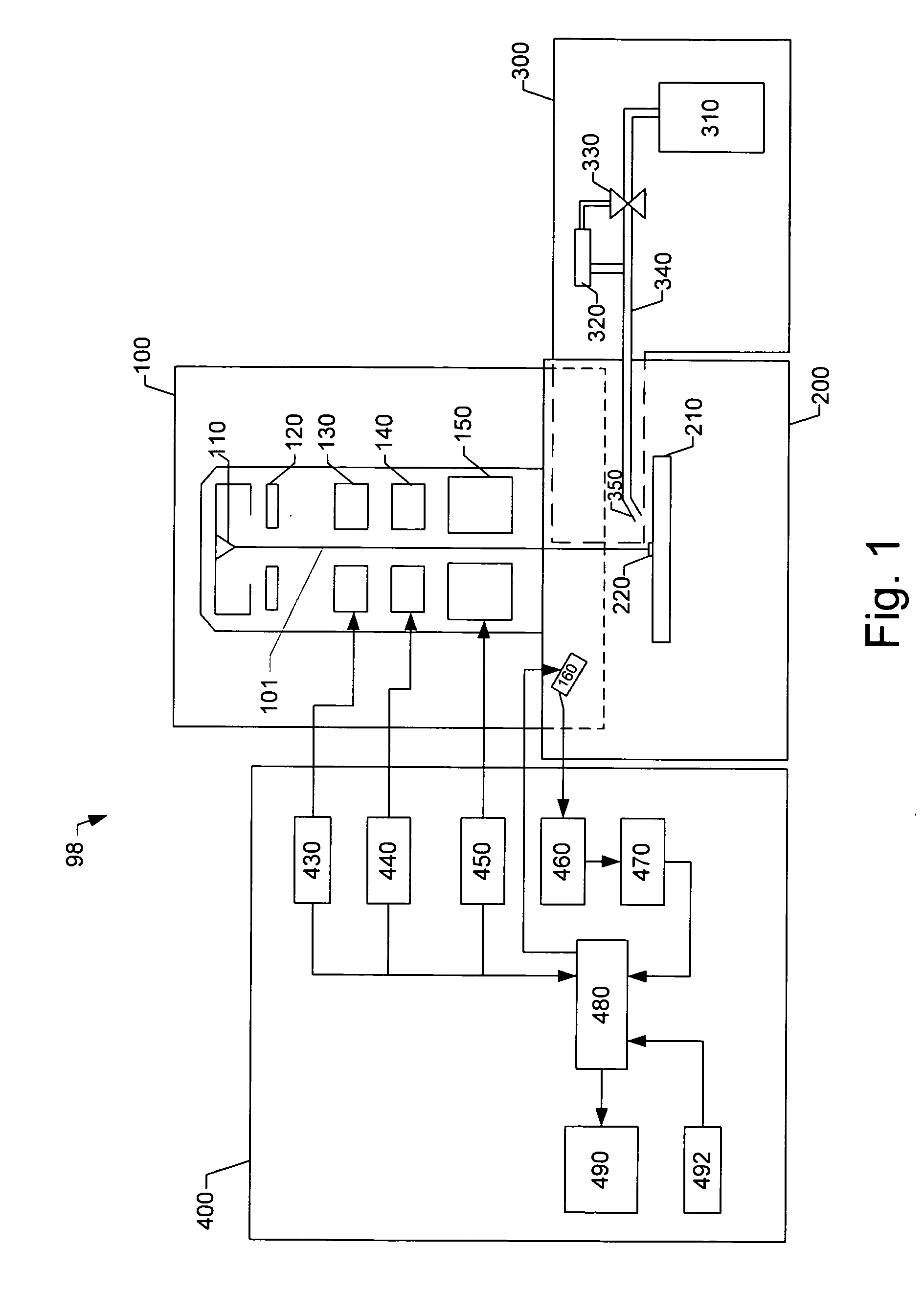Beam-induced etching
a beam-induced etching and beam-induced technology, applied in the field of localized beam-induced etching, can solve the problems of mask image defect, loss of transparency, and introduction of defects in the mask image that is transferred to the semiconductor substra
- Summary
- Abstract
- Description
- Claims
- Application Information
AI Technical Summary
Benefits of technology
Problems solved by technology
Method used
Image
Examples
Embodiment Construction
[0026] The present invention provides methods for locally removing material using a beam. The invention provides etchants that are useful for selectively etching certain materials in the presence of an activating beam, such as a charged particle beam or a laser beam. Some embodiments are particularly useful for etching chromium materials and can be used for electron beam-induced etching.
[0027]“Chromium material” as used herein includes any material containing chromium, such as the metallic chromium, partially oxidized chromium and partially nitrided chromium. Such chromium materials are commonly used as absorbing layers in photolithography masks. The invention is therefore particularly useful for photolithography mask repair. The invention can be used as part of a serial process, in which a single beam performs operations one after another, or in a parallel process, in which multiple beams operate simultaneously on one or more work pieces, either on the same or on different areas o...
PUM
| Property | Measurement | Unit |
|---|---|---|
| Time | aaaaa | aaaaa |
| Adsorption energy | aaaaa | aaaaa |
| Electric dipole moment | aaaaa | aaaaa |
Abstract
Description
Claims
Application Information
 Login to View More
Login to View More - R&D
- Intellectual Property
- Life Sciences
- Materials
- Tech Scout
- Unparalleled Data Quality
- Higher Quality Content
- 60% Fewer Hallucinations
Browse by: Latest US Patents, China's latest patents, Technical Efficacy Thesaurus, Application Domain, Technology Topic, Popular Technical Reports.
© 2025 PatSnap. All rights reserved.Legal|Privacy policy|Modern Slavery Act Transparency Statement|Sitemap|About US| Contact US: help@patsnap.com



